UPSC Daily Current Affairs: 26th September 2024 | Current Affairs & Hindu Analysis: Daily, Weekly & Monthly PDF Download
GS3/Environment
Project Cheetah
Source: Indian Express

Why in news?
Project Cheetah, aimed at reintroducing the African sub-species of cheetahs in India, has recently celebrated its two-year mark as of September 17. This ambitious initiative seeks to establish a stable breeding population of cheetahs in central India and aims to utilize these animals as an umbrella species to help restore various open ecosystems such as scrubs, savannahs, grasslands, and degraded forests. Notably, this marks the world's first inter-continental large wild carnivore translocation project.
- The cheetah was declared extinct in India in 1952, making it the only large wild mammal to go extinct since the country gained independence. The project is funded by Project Tiger and the Compensatory Afforestation Fund Management & Planning Authority (CAMPA). While there have been some successes, the project continues to face significant challenges that raise concerns about its long-term viability.
About Project Cheetah:
- The primary goals of Project Cheetah are:
- To establish a stable breeding population of cheetahs in central India.
- To restore open ecosystems by using cheetahs as an umbrella species.
- This project represents the first large-scale attempt to translocate wild carnivores across continents.
- Funding is provided through initiatives like Project Tiger and CAMPA.
Status of Cheetah Reintroduction:
- The reintroduction began with the translocation of cheetahs from Namibia and South Africa to Kuno National Park in Madhya Pradesh.
- In total, two batches of cheetahs were brought in, consisting of eight and twelve individuals.
- Initially, these cheetahs were placed in soft-release enclosures called bomas to help them acclimatize to the new environment and learn to hunt.
- Mating among the cheetahs led to the birth of 17 cubs.
- However, the survival rate has raised concerns, with eight (40%) of the 20 translocated cheetahs dying due to various factors, including injuries and infections.
- Currently, there are 24 cheetahs (12 adults and 12 cubs) remaining, with plans to translocate an additional 6-8 cheetahs to Gandhi Sagar Wildlife Sanctuary soon.
Challenges in Releasing Cheetahs into the Wild:
- The project has faced significant challenges in transitioning the cheetahs to a fully wild existence.
- Following the death of a cheetah named Pawan, all remaining individuals have been kept in enclosures, which has sparked criticism regarding the delay in their release.
- Critics argue that keeping large wild carnivores in captivity for extended periods goes against established wildlife management practices.
- Prolonged confinement of the cheetahs has drawn scrutiny, as the Cheetah Action Plan mandates a short quarantine followed by a brief acclimatization period.
Prey Scarcity:
- A critical challenge for Project Cheetah is the insufficient prey base in the region.
- Recent reports indicate a decline in chital density, a primary prey for cheetahs and leopards, from 23.43 animals per square kilometer in 2021 to just 17.5 in 2024.
- This decline has created a significant prey deficit, exacerbating the difficulties faced by the reintroduced cheetahs.
- With only about 6,700 chital present, there is not enough prey to sustain the existing wildlife population, which includes 91 leopards and 12 adult cheetahs needing a combined annual prey supply of over 26,000 animals.
- Immediate action is needed to augment prey availability in Kuno and Gandhi Sagar, highlighting poor project management given Kuno was selected for its rich prey base.
Way Forward / Suggestions:
- The cheetahs have shown a tendency to roam beyond Kuno's boundaries, even entering human habitats.
- Tracking their movements reveals significant travel, indicating that the current conservation strategies may need reevaluation.
- A comprehensive interstate landscape conservation plan is essential for the future of Project Cheetah, particularly focusing on the Kuno-Gandhi Sagar landscape.
- A stable population of 60-70 cheetahs is necessary, requiring enhanced prey management and coordination across state lines.
- Ensuring the protection of open ecosystems will be vital for the project's success.
Conclusion:
- While Project Cheetah has made strides in reintroducing cheetahs to India, it continues to grapple with significant challenges such as prey scarcity and the timely release of the cheetahs into the wild.
- Effective management, transparency, and robust conservation efforts will be crucial for ensuring the long-term success of this initiative and the sustainable revival of cheetah populations in India.
GS2/International Relations
India - China Relations
Source: Times of India

Why in News?
Speaking at a think tank in New York, foreign minister S Jaishankar described India-China ties as "significantly disturbed". This comes after his recent statement claiming that the two neighbours have resolved 75% of "disengagement problems" along the Line of Actual Control (LAC) in eastern Ladakh.
Evolution of the India - China Relations:
- During the 1990s and until 2013, India and China aimed to prevent another border war similar to the one in 1962, agreeing to set aside their border disputes to focus on mutual economic growth.
- Both countries engaged each other on secondary issues like terrorism and the situation in Afghanistan.
- After 2013, national interests diverged significantly as President Xi Jinping adopted a more assertive foreign policy.
- Xi’s agenda included promoting Chinese global technology leaders and advancing the Belt and Road Initiative (BRI), which raised security concerns for India.
- India, perceiving itself as a rising global economic power, sought to leverage strategic partnerships in Asia and beyond.
- Since the pandemic, India has gained confidence from its status as the world’s fastest-growing major economy.
- India shifted its ambitions from being a supplementary player to being a trusted middle-weight supplier in global supply chains, as highlighted by its 'Make in India' initiative, aimed at boosting services and industry through foreign investment.
Current State of India - China Relations:
- The India-China relationship is currently strained by several factors, including an unresolved border issue, an imbalanced trade relationship, and China's strategic alliance with Pakistan.
- There is a growing political and strategic disagreement regarding each nation’s perceived rightful position in Asia and globally.
- The relationship has suffered from a lack of strategic trust since the June 2020 border clash in Galwan Valley, undermining the border-management agreements developed over decades.
- The war in Ukraine has drawn China closer to Russia, which is traditionally India’s defense partner.
- Signs of deteriorating relations include the Chinese President's absence from the 2023 G-20 summit in New Delhi and the Indian Prime Minister's non-attendance at the 2024 SCO summit in Kazakhstan.
Efforts to Break the Deadlock in the India - China Relations and Way Ahead:
- Efforts to resolve disengagement issues are being pursued through strategic communication, with top national-security officials from both countries meeting in 2022, 2023, and July 2024.
- Key friction points, including the Galwan Valley and the areas around Pangong Tso and Gogra-Hot Springs, have seen some resolution, leading to the establishment of buffer zones along the LAC.
- However, longstanding issues such as Depsang Plains and Demchok, which precede the current military standoff, remain unresolved.
- Indian troops in the Depsang Plains are currently unable to access their patrol points, particularly in an area referred to as the Y junction.
- Discussions regarding troop deployments along the LAC took place during the 31st Working Mechanism for Consultation & Coordination on India-China Border Affairs (WMCC) and the 22nd round of military talks, potentially leading to a mutual agreement on troop movements.
- Regardless of any changes in troop deployment, infrastructure development along the entire LAC will continue as planned.
- Given the significance of the India-China relationship for the future of Asia and the world, it is crucial to avoid further tensions that might hinder peaceful development.
- One suggested path forward is the establishment of new confidence-building measures between the two nations.
GS2/International Relations
India joins US-led Mineral Security Network
Source: Indian Express
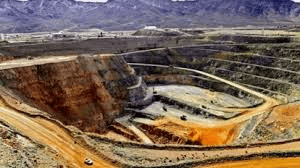
Why in news?
India has officially become a member of the Minerals Security Finance Network (MSFN), a US-led initiative aimed at strengthening collaboration among its members to secure supply chains for critical minerals. This announcement was made by the US State Department during the UN General Assembly, with a pact that includes 14 nations and the European Union. The MSFN is an extension of the Minerals Security Partnership (MSP), which was initiated by the US in 2022. India had previously joined the MSP in June 2023.
India’s participation
- On August 15, 2023, China imposed restrictions on the export of antimony, a vital mineral used in military and defense technologies, citing national security concerns. This measure, which took effect on September 15, is part of a larger trend of China's counteractions against global efforts to decrease dependence on its mineral resources.
- China holds a dominant position in the global critical minerals market, controlling approximately 60% of the production of rare earth and critical minerals and 80% of their processing. This dominance leaves countries like the U.S., EU, India, and Japan in a precarious position.
- In the past, China has leveraged its mineral dominance, as demonstrated in 2010 when it halted rare earth exports to Japan during a maritime dispute. In 2023, further restrictions were placed on minerals such as gallium, germanium, and graphite in retaliation for U.S. export controls on advanced technologies. These actions indicate China's readiness to use its mineral control as a tool against Western attempts to diversify supply chains.
- China's approach marks a shift from collaboration to coercion in its foreign relations, suggesting an increase in mineral export controls as tensions with the West escalate.
About
- In August 2022, the US and ten other countries formed the Minerals Security Partnership (MSP) to ensure a stable supply of critical minerals essential for a clean energy transition.
- The MSP targets minerals crucial for clean energy technologies, including lithium, cobalt, nickel, manganese, graphite, rare earth elements, and copper.
Goals
- Sustainable supply chains: The MSP aims to develop diverse, sustainable, and responsible supply chains for critical minerals.
- Economic development: The initiative seeks to ensure that the production, processing, and recycling of critical minerals contribute to economic growth.
- Environmental, social, and governance (ESG) standards: Members commit to maintaining high ESG standards in their operations.
- Shared prosperity: The MSP promotes shared prosperity among its members.
Members
- Participating nations include Australia, Canada, Estonia, Finland, France, Germany, India, Italy, Japan, Norway, Republic of Korea, Sweden, United Kingdom, United States, and the European Union.
Background: Need for MSFN
- The establishment of the MSFN reflects an increasing necessity to reduce reliance on countries like China for critical resources, particularly rare earth minerals.
- Signatory nations have emphasized that meeting global demand for these minerals, crucial for supporting the clean energy transition, requires collaboration between public and private sectors.
- The MSFN is a new initiative stemming from the MSP, created by the US in 2022. Its goal is to unite institutions from the Indo-Pacific region and Europe, fostering cooperation, information sharing, and co-financing.
- Under this initiative, development finance institutions (DFIs) and export credit agencies (ECAs) from member countries will collaborate to enhance production capacity and resilience in mineral supply chains.
Countries that are part of this initiative
- The collaboration comprises 14 countries and the European Commission, including the USA, Australia, Canada, Estonia, Finland, France, Germany, Italy, Japan, the Republic of Korea, Norway, Sweden, the United Kingdom, and the EU.
India’s participation
- India’s involvement in this initiative aims to diversify and secure its supply of critical minerals from nations such as Argentina, Chile, Australia, and specific African countries.
- Kazakhstan is also being considered as a potential source for India's mineral needs.
- China dominates the global production of rare earth minerals, controlling about 70% of the output, while India is striving to strengthen its position in the lithium value chain.
- India relies heavily on imports of critical minerals like lithium, nickel, cobalt, and copper, leading to an import expenditure of around ₹34,000 crore in FY23.
- The demand for minerals in India is projected to grow, along with the associated import costs, increasing the nation's vulnerability.
- This partnership with the US-led network is a significant step for India in reducing its dependency on China for these minerals and in establishing a robust, self-sustaining supply chain for its green energy initiatives.
GS2/Polity
Clause 6 of Assam Accord
Source: Economic Times
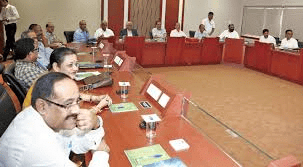
Why in news?
Following a meeting with the All Assam Students’ Union (AASU), the Chief Minister of Assam has begun the implementation process for 52 recommendations from the Justice Biplab Sarma Committee regarding Clause 6 of the Assam Accord. This development comes after the committee's report was finalized in February 2020. However, 15 significant recommendations requiring amendments to the Constitution will not be acted upon immediately, as the Chief Minister mentioned these will be discussed with the central government at a later date.
Background: Assam Accord (1985)
- The Assam Accord was a Memorandum of Settlement signed between the Rajiv Gandhi-led Union government and various organizations in Assam.
- This agreement concluded a six-year-long agitation against the influx of Bangladeshi migrants into Assam.
- Signed in 1985, it marked the end of the Assam Movement.
- Clause 6 of the Assam Accord ensures Constitutional, legislative, and administrative safeguards to protect the cultural, social, and linguistic identity of the Assamese people.
- These safeguards aim to address issues related to the state’s demographic changes due to migration.
Formation of the committee
- In July 2019, the Union Home Ministry established a 14-member committee, led by retired Assam High Court Justice Biplab Kumar Sarma, to make recommendations for implementing Clause 6.
- A critical focus of the committee was to define who qualifies as "the Assamese people" eligible for these protections.
Submission of the report
- The committee completed its final report in August 2020, which was received by the then Chief Minister, Sarbananda Sonowal.
- In a surprising move, four committee members revealed the confidential report publicly.
Key Recommendations:
- Definition of Assamese People:
- Indigenous Tribals
- Other Indigenous Communities of Assam
- Indian citizens residing in Assam on or before January 1, 1951, and their descendants
- Indigenous Assamese People
- Safeguards:
- Based on the above definition, the committee suggested reservations for "Assamese people" in various sectors including:
- Parliament
- State Assembly
- Local bodies
- Government jobs
- Based on the above definition, the committee suggested reservations for "Assamese people" in various sectors including:
Classification of Recommendations
- The committee's 67 recommendations are categorized as follows:
- 40 recommendations under the jurisdiction of the state government
- 12 recommendations that require the Centre’s concurrence
- 15 recommendations that fall within the exclusive domain of the Centre
- Out of these, 52 recommendations in the first two categories are set to be implemented by April 2025, with a roadmap due to AASU by October 25, 2024.
Acceptance of 1951 Cut-off Date
- The Assam government has endorsed the 1951 cut-off date concerning the specific recommendations from the Justice Biplab Sarma Committee report.
- The definition of "Assamese people" is constrained to the context of the report's suggestions.
Land Safeguards
- Special Revenue Circles: Areas designated where only Assamese individuals can own and transfer land.
- Land Titles: A three-year initiative to provide land titles to Assamese individuals who have inhabited land without proper documentation.
- Char Areas Survey: Surveying riverine regions to classify newly formed chars as government land, prioritizing allocations for those affected by river erosion.
Language Safeguards
- Assamese as Official Language: Retaining Assamese as the official state language as per the 1960 Assam Official Language Act, with provisions for local languages in certain areas.
- Bilingual Government Documents: Issuing state government acts, rules, and orders in both Assamese and English.
- Autonomous Language Council: Establishing a council to promote and preserve indigenous languages of Assam.
- Assamese in Schools: Mandating Assamese as a compulsory subject in all English medium schools up to Class VIII or Class X.
Cultural Heritage Preservation
- Sattras (Neo-Vaishnavite Monasteries): Creating an autonomous body to manage the development of sattras and provide financial support.
- Cultural Complexes: Constructing multipurpose cultural complexes in each district to safeguard the cultural heritage of all ethnic groups.
Sixth Schedule Areas
- The autonomous councils within Assam’s Sixth Schedule Areas, including the Bodoland Territorial Council, North Cachar Hills Autonomous Council, and Karbi Anglong Autonomous Council, will determine the implementation of the 52 recommendations.
- These councils possess certain legislative and judicial autonomy as per the Sixth Schedule of the Constitution.
Inner Line Permit
- There is a proposal to implement an Inner Line Permit (ILP) system for entry into Assam, similar to current regulations in Nagaland, Arunachal Pradesh, Manipur, and Mizoram.
Reservations for Assamese People
- Parliament and State Assembly: 80-100% reservation of seats for Assamese individuals in both Parliament and State Assemblies, as well as local bodies.
- Government Jobs: 80-100% reservation in government job positions within Assam.
- Private Sector Collaborations: 70-100% reservation for job vacancies in partnerships between the Assam government and private enterprises.
- Creation of an Upper House: Proposal to establish a Legislative Council in Assam reserved exclusively for Assamese people.
GS3/Environment
Places in News: Neom Megacity Project
Source: Hindustan Times

Why in News?
The Wall Street Journal has brought attention to the controversies surrounding the Neom Megacity Project, which is a significant undertaking in Saudi Arabia and is recognized as the world's largest real estate construction project.
About
- Location: Northwestern Tabuk Province, Saudi Arabia, adjacent to the Red Sea
- Launched: 2017 by Crown Prince Mohammed bin Salman
- Part of: Saudi Arabia's Vision 2030 initiative
- Objective: To diversify the economy of Saudi Arabia and reduce its dependency on oil
- Size: Encompasses an area of 26,500 square kilometers
- Initial Cost: Originally estimated at $500 billion, now projected to reach $1.5 trillion
- Expected Completion: Anticipated to be completed by 2039
Key Projects
- The Line: A 170-kilometer long linear city designed to accommodate 9 million residents
- Oxagon: An octagonal industrial city
- Trojena: A mountain resort planned for the 2029 Asian Winter Games
- Magna: A luxury coastal city
- Sindalah: A luxury island set to open in 2024
Technological Focus
- Emphasizes renewable energy sources such as solar and wind power
- Incorporates advanced technologies like artificial intelligence and robotics
- Aims for the production of green hydrogen
Environmental Goals
- Strives to be powered by 95% renewable energy
- Commits to sustainable development practices
Controversies surrounding the Project:
- Displacement of Indigenous Tribes: The Huwaitat tribe faces forcible displacement, raising significant human rights issues.
- Slow Progress: Construction is lagging, with merely 1.4 km of The Line expected to be completed by 2030.
- Workplace Misconduct: Allegations of a toxic work environment and unethical leadership practices, including disregard for worker safety.
- Surveillance Concerns: Critics express worry about the project's implementation of real-time monitoring, which raises privacy issues.
- Cost Overruns: The project's budget has escalated from $500 billion to $1.5 trillion, prompting the need for scaled-back plans.
GS1/History & Culture
Deendayal Upadhyaya’s Birth Anniversary
Source: Indian Express
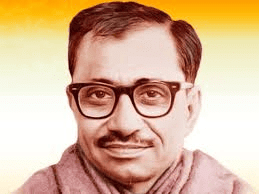
Why in News?
September 25 marks the 108th birth anniversary of Pandit Deendayal Upadhyaya, a significant figure in India's right-wing movement.
About Pandit Deendayal Upadhyaya (1916-1968)
- Born on September 25, 1916, in Mathura, Uttar Pradesh.
- Since 2014, Antyodaya Diwas is celebrated on this day to honor his legacy.
- Affiliated with the Rashtriya Swayamsevak Sangh (RSS) and Bharatiya Jana Sangh (BJS).
Political Role
- One of the prominent leaders of the Bharatiya Jana Sangh.
- Served as President of the Bharatiya Jana Sangh.
Key Contributions
- Founder of the philosophy of Integral Humanism.
- Introduced the concept of Antyodaya aimed at uplifting the poorest members of society.
- Promoted self-reliance (Swadeshi) and advocated for the decentralization of power.
Doctrine of ‘Antyodaya’
- The term means “upliftment of the last person in society.”
- Emphasizes improving the living conditions of the poorest and most marginalized communities.
- Upadhyaya asserted that genuine development should be assessed by the well-being of the weakest groups, pushing for policies that enhance economic, social, and educational inclusion.
Legacy
- His ideas inspired various initiatives such as the Antyodaya Anna Yojana and the Deendayal Upadhyaya Gram Jyoti Yojana.
- In 2015, the National Rural Livelihoods Mission (NRLM) was renamed as Deendayal Antyodaya Yojana-NRLM in his honor.
Death
- Passed away on February 11, 1968, under mysterious circumstances in Mughalsarai, Uttar Pradesh.
GS3/Environment
How Global Warming Affect Forecasting?
Source: The Hindu

Why in News?
The unprecedented warming recorded in 2023-2024 has shed light on the severe impacts of global warming. The extreme weather events observed globally include deadly heatwaves, devastating cyclones, floods, droughts, and wildfires.
Impact of Warming on Predictability:
- Increased Variability: The extreme warming observed complicates climate predictions, particularly for natural events such as El Niño, monsoons, and hurricanes.
- Natural Variability: The warming trend may prolong the timescale of natural decadal variability, making it challenging to differentiate between short-term climate fluctuations and long-term trends.
- Model Limitations: Despite advancements, current climate models struggle to accurately capture changes in dominant climate modes, resulting in inconsistencies in predicting events like monsoon patterns.
Types of Climate Models to Forecast the Weather:
- General Circulation Models (GCMs): These models simulate the climate system’s physics by representing the interactions among the atmosphere, oceans, land, and ice, dividing the Earth into a three-dimensional grid to calculate temperature and humidity for each grid cell.
- Earth System Models (ESMs): A more advanced version of GCMs that incorporates biogeochemical cycles, allowing for the simulation of interactions between climate and ecological processes, such as carbon and nitrogen cycles.
- Regional Climate Models (RCMs): These models focus on specific geographic areas, providing detailed climate projections by using outputs from GCMs for localized simulations.
- Integrated Assessment Models (IAMs): These models merge climate science with socioeconomic factors to analyze how human activities influence climate change and project future emissions scenarios.
Challenges in Forecasting Extreme Weather:
- Inconsistent Predictions: Forecasts for extreme weather events like monsoons and hurricanes in 2023 demonstrated lower accuracy, exposing the limitations of existing models and observational networks.
- Unforeseen Factors: Unexpected contributors, such as the impact of the Hunga Tonga volcano or CO2 emissions from wildfires, intensified warming in unpredictable ways, highlighting the models' inability to predict new factors.
- Censorship Concerns: The quick response required from social media platforms to address misleading content within 36 hours raised concerns regarding censorship and freedom of expression.
Future of Weather Prediction Models:
- Need for Model Improvements: Ongoing efforts aim to enhance models by incorporating the latest technologies, such as AI and machine learning, to boost weather prediction accuracy on hyperlocal scales.
- Natural Modes and Uncertainty: The predictability of natural modes like El Niño, La Niña, and IOD may decline with ongoing warming, increasing uncertainty in future climate forecasts.
- Short-Term Focus: A shift toward prioritizing short-term predictions (up to 10 or 20 years) may yield more reliable forecasts, considering the challenges of long-term predictions amid continuous global warming.
Way Forward:
- Enhanced Climate Models: Invest in improving climate models with advanced technologies such as AI, machine learning, and sophisticated sensors to enhance the accuracy of short-term forecasts and better capture the effects of natural variability under warming.
- Localized Early Warning Systems: Develop robust, hyperlocal early warning systems to enhance preparedness for extreme weather events, concentrating on disaster management and reducing vulnerabilities in high-risk communities.
GS2/International Relations
Taking stock of global nuclear disarmament
Source: The Hindu

Why in news?
September 26 is recognized on the United Nations calendar as the International Day for the Total Elimination of Nuclear Weapons.
- The current landscape of global nuclear disarmament is shaped by various treaties and ongoing challenges. Here's a detailed overview:
Treaty on the Prohibition of Nuclear Weapons (TPNW)
- The TPNW, effective since 2021, is the first legally binding international agreement that comprehensively bans nuclear weapons.
- As of July 2024, there are 70 parties to the treaty and 27 additional signatories pending ratification, which collectively represent nearly 50% of the world’s nations.
Non-Proliferation Treaty (NPT)
- Established in 1970, the NPT serves as the foundational treaty aimed at preventing the spread of nuclear weapons and promoting eventual disarmament.
- Critics argue that the NPT has a limited focus on actual disarmament progress.
Persistent Objectors
- Nuclear-armed countries such as the U.S., Russia, China, India, and Pakistan, along with their allies, have consistently opposed the TPNW.
- These nations refuse to be bound by the treaty's provisions, undermining global disarmament efforts.
Key Obstacles to Nuclear Disarmament
- Nuclear Deterrence Doctrine
- The belief that nuclear weapons deter attacks is a primary justification for their continued existence.
- Nuclear-Weapon States’ Resistance
- Nations like the U.S., Russia, China, and India regard nuclear arsenals as vital to their security, despite their commitments to disarmament under the NPT.
- Geopolitical Conflicts
- Ongoing tensions, such as Russia's actions in Ukraine, China's military expansion, North Korea's nuclear tests, and Iran's uranium enrichment, amplify the global nuclear threat.
- Lack of Enforcement Mechanisms
- While the TPNW is significant normatively, it lacks strong enforcement mechanisms and relies on voluntary compliance.
- Nuclear states do not face direct penalties for failing to adhere to the treaty.
Steps to Reinvigorate Nuclear Disarmament
- Strengthening International Advocacy
- Civil society groups, former political leaders, and international organizations should push for disarmament and encourage nuclear states to rethink their positions.
- Public pressure could help generate the political will needed for significant disarmament measures.
- Engagement of Non-Nuclear States
- Non-nuclear states supporting the TPNW should work to expand the treaty's influence, urging more nations to ratify and actively participate.
- This approach could diplomatically and morally isolate nuclear-armed states.
- Building Confidence through Arms Control Treaties
- Reviving treaties such as the Comprehensive Test Ban Treaty (CTBT) and the New START treaty is essential for reducing nuclear risks.
- The CTBT prohibits all nuclear explosions, whether for military or civilian purposes, across all environments.
- Diplomatic Pressure and Dialogue
- Encouraging dialogue among major nuclear powers could mitigate tensions and pave the way for gradual disarmament.
- Leaders should explore confidence-building measures, promote transparency, and mutually reduce nuclear arsenals.
GS2/Governance
Why the ‘fact-checking’ unit was invalidated?
Source: The Hindu
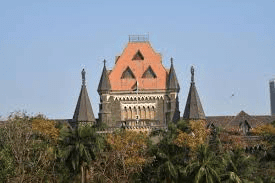
Why in News?
On September 20, the Bombay High Court ruled that the amended IT Rules, 2021, were unconstitutional. The decision arose from concerns regarding the Centre’s Fact Check Unit's power to label content as “fake or misleading.” The court deemed the language used in these rules to be vague and subject to arbitrary enforcement.
- Justice Atul Sharachchandra Chandurkar was the decisive voice in this ruling, following a split decision from a division bench that included Justices G.S. Patel and Neela Gokhale in January 2024.
Why did the Bombay High Court strike down IT Rules, 2021?
- Violation of Constitutional Rights:
- The amended rules were found to infringe upon Articles 14 (right to equality) and 19 (freedom of speech and expression) of the Constitution.
- Justice Chandurkar described the terms “fake, false, or misleading” as ambiguous and overly broad, which could lead to arbitrary actions by the government.
- Censorship Concerns:
- The court pointed out that the rules constituted a form of censorship and lacked adequate procedural safeguards.
- Justice Patel emphasized that these regulations allowed the government to become a “judge in its own cause,” jeopardizing the principle of free speech.
- Chilling Effect on Intermediaries:
- The stipulation requiring social media platforms to act on flagged content within 36 hours was seen as creating a chilling effect.
- This requirement could deter platforms from hosting diverse opinions and critiques of government actions.
About Fact Check Unit:
- The Fact Check Unit (FCU) was created under the Press Information Bureau (PIB) of the Government of India to tackle misinformation and fake news relating to government policies.
- Established in November 2019, it was formally recognized as the government’s central fact-checking authority under the amended IT Rules, 2021.
What did the amended rules ask of social media intermediaries?
- Rule 3(1)(b)(v) mandated that social media intermediaries must:
- Make “reasonable efforts” to prevent users from uploading content flagged by the FCU as misinformation.
- Remove such flagged content to maintain their “safe harbour” protection against liability for third-party content.
Supreme Court’s Intervention
- Justice Chandurkar was appointed as a tie-breaker judge to deliver the final ruling following petitions challenging the amended rules.
- The Supreme Court initially dismissed requests for an interim stay on the FCU's establishment but later suspended its operation until a conclusive decision regarding the constitutional validity of the rules was made.
Way forward:
- Strengthen Procedural Safeguards:
- Any fact-checking framework should incorporate clear and objective guidelines alongside an independent review process to prevent arbitrary actions and safeguard free speech rights.
- Promote Transparency and Oversight:
- Establish a transparent oversight body that includes representatives from civil society, legal experts, and technology professionals to ensure fair implementation and prevent misuse of content regulation powers.
GS3/Economy
10 Years of Make in India
Source: PIB
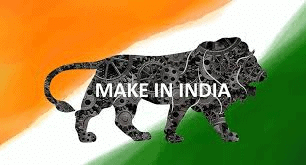
Why in News?
It has been 10 years since the announcement of the "Make in India" Programme on September 25 in the year 2014.
About the Programme
- Led by the Department for Promotion of Industry and Internal Trade (DPIIT), under the Ministry of Commerce & Industry.
Objective
- Aim to transform India into a global manufacturing and investment hub.
Key Focus Areas
- Attracting foreign investment, promoting industrialization, and fostering export-led growth.
Make in India 2.0 Sectors
- Covers 27 sectors, including strategic manufacturing and services.
GDP Target (Manufacturing)
- To enhance the manufacturing share in GDP from 16% to 25% by 2022.
Job Creation Target
- To generate 10 crore additional jobs by 2022.
Manufacturing Growth Target
- Aiming for an annual growth rate of 12-14% in the manufacturing sector.
Four Pillars
- Focus on improving the Ease of Doing Business, de-licensing, and deregulating industries.
- Develop industrial corridors and enhance existing infrastructure to facilitate faster registration.
- Involves 27 sectors, including manufacturing, infrastructure, and services.
- The government acts as a facilitator, partnering with industries for economic development.
Success of the Project
- India has become the second-largest mobile phone producer in the world.
- The Production-Linked Incentive (PLI) schemes have attracted ₹1.97 lakh crore in investments across 14 key sectors, creating 8 lakh jobs.
- The PM GatiShakti initiative has improved logistics and transport connectivity, leading to $667.41 billion in Foreign Direct Investment (FDI) from 2014 to 2024.
- Indigenous projects like INS Vikrant and Vande Bharat Trains showcase India's advancements in manufacturing.
- India has improved its global ranking, moving from 142nd to 63rd.
Limitations
- Manufacturing's share in GDP has remained stagnant at 17.3% for 2023-24, the same level as in 2013-14, despite a brief rise to 18.5% in 2021-22.
- Employment in manufacturing has declined, with its share in total employment falling from 11.6% to 10.6% between 2022-23.
- India's share in global exports increased from 1% in 2005-06 to 1.8% in 2015-16 but has grown only marginally since.
- Additionally, the share of imports in GDP has risen back to 27%, similar to the pre-pandemic level after dropping to 21.2% in 2020-21.
Previous Year Question (PYQ)
- [2017] "Industrial growth rate has lagged behind in the overall growth of Gross Domestic Product (GDP) in the post-reform period." Discuss the reasons. To what extent are the recent changes in Industrial Policy capable of enhancing the industrial growth rate?
|
38 videos|5293 docs|1118 tests
|
FAQs on UPSC Daily Current Affairs: 26th September 2024 - Current Affairs & Hindu Analysis: Daily, Weekly & Monthly
| 1. What is Project Cheetah and its significance in India-China relations? |  |
| 2. What are the implications of India joining the US-led Mineral Security Network? |  |
| 3. What is Clause 6 of the Assam Accord and its importance? |  |
| 4. What is the Neom Megacity Project and its potential impact? |  |
| 5. How has global warming affected weather forecasting? |  |





















